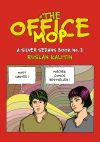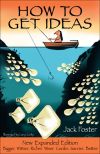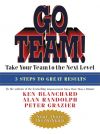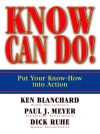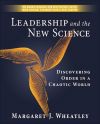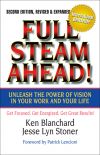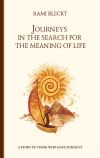Правообладателям!
Представленный фрагмент книги размещен по согласованию с распространителем легального контента ООО "ЛитРес" (не более 20% исходного текста). Если вы считаете, что размещение материала нарушает ваши или чьи-либо права, то сообщите нам об этом.Читателям!
Оплатили, но не знаете что делать дальше?
Текст бизнес-книги "Now We Are 40"
Автор книги: Tiffanie Darke
Раздел: Жанр неизвестен
Текущая страница: 2 (всего у книги 5 страниц)
1
I Was Eight in the Eighties
I was eight when the Eighties began. Too young to live them, but old enough to be knocked around by what was going on. I got my info from John Craven on Newsround, Bruce Parker on South Today and Smash Hits magazine. I remember the Falklands War and the sinking of the Belgrano, probably around the time Wham! entered my orbit. Of course, Thatcher was a consistent backdrop (my parents, traumatised by the economics of the Seventies and being utterly broke, were breathless for her and would not hear a word against her in the house). The miners’ strike was a thing, but it was a long way away from Bournemouth, where my dad had taken up a job as a vascular surgeon. He was a big believer in the NHS being run by passion and vocation, and the importance of public services, but Maggie’s privatisation schemes were all good – and private medical practice served my dad pretty well.
Being an adolescent in Bournemouth was actually really fun: there were beaches in the summertime and boys with boats, there was a Wimpy bar that served Knickerbocker Glories and a cinema or two (I saw Desperately Seeking Susan on my first date), and there was an ice rink where my friends would have birthday parties. We’d hang out on bikes in the park – I had a Gresham Flyer, which was denim blue. My brother’s BMX had a much comfier seat but the handlebars were a bit weird.
Then a roller disco opened and that felt pretty edgy – a daytime nightclub and sexy women skating round in miniskirts and legwarmers. One was a steward named Hayley, with long, blonde hair and a pneumatic body. She had a red pleated miniskirt like the women in Bucks Fizz wore in ‘Making Your Mind Up’ and she was the prettiest girl in the rink. Ask any boy from Bournemouth what he likes best about his hometown and he’ll tell you it’s the girls.
But mostly I remember Top of the Pops, and me and my friend Lizzie religiously learning all the words to the songs like they were lines in a play. I would record the Top 40 on Sunday night on a cassette tape so I could go through it all the next week copying the lyrics down into an exercise book – ‘Hey Mickey’ by Tony Basil, Howard Jones, the Thompson Twins. I had a picture of Wham! on my wall – my party trick then (and now) was to recite all the words to the ‘Wham Rap’. I properly fancied Andrew Ridgeley. He was my first crush. Smash Hits did a pullout centrespread of him and George that I tacked on to my Laura Ashley wallpaper. Then Mum had another baby and we got an au pair who had this really weird short haircut with a side parting and she loved the Human League. And so began my fascination with cool: something remote I didn’t quite understand but absolutely wanted to be part of.
This was a world with no internet, no mobile phones and just three TV stations. Everyone sat down together and watched Saturday Swap Shop and Tiswas, shows that would foreshadow The Big Breakfast and The Word. You couldn’t stream Dallas and Dynasty in bulk episodes, you had to wait until Saturday night, and watch them episodically week by week. They depicted Reagan’s America, an off-the-wall land of excess, where ranchers drank whisky and drilled for oil, women inhaled champagne and sported massive shoulder pads, and everyone was a total bitch to each other. The whole thing looked incredible. My parents wouldn’t let my brother and me watch either of them to begin with, but they were quite often out on a Saturday night, so we used to pour the babysitter enormous gin and tonics (my dad thought it was very important we knew how to pour a gin and tonic; it made us useful around the house) then sneak downstairs and watch them over her shoulder through the crack in the door.
The nation’s station was Radio 1: Bruno Brookes, Dave Lee Travis, Mike Reid and Simon Bates’s Our Tune. We did things together as a nation, communally, and we went places to meet each other face to face. Girlfriends would phone in the evening to chat on the phone and my dad would be furious to discover me still on the line 40 minutes later – not only was he footing the bill but he was also on-call to the hospital and there was no other way for emergency care to get hold of him. No Skype or mobiles back then.
Eventually I was allowed to take the bus into town on my own and watch the high street change around me. Bournemouth was a town that had been known as God’s Waiting Room when we arrived. It was full of retirement flats and blue rinses, but it started to thrive under Thatcher’s economy, and the average age of the population plummeted. I began to rebel against my mum’s choice of wardrobe for me – she loved all those Eighties bright colours. There was a big C&A at the top of the town that peddled this stuff, along with a Chelsea Girl, an Etam, Tammy Girl and Dorothy Perkins. The high street was not cool back then, not by a long way. It was cheap clothes in nasty fabrics with lairy designs.
Mum eventually relented and gave me a clothes allowance, and I got a pair of pixie boots and a trilby hat on a trip to London to Kensington Market. Then the Body Shop opened in Bournemouth and every Saturday I’d go there to buy peppermint foot lotion and cocoa butter. The Body Shop felt cool: it had all these messages about not being tested on animals, and there was talk of the tribal heartlands where the ingredients were sourced.
Social consciousness began to register. Sting brought an Amazonian warrior onto Wogan, Greenpeace set up shop on the high street, and my mum and I used to cry over the whaling footage on the six o’ clock news. We both signed up to Greenpeace and would cheer on the Rainbow Warrior. As the TV presenter and entrepreneur Richard Reed says: ‘Greenpeace were the great disruptors and agitators. They were really high profile when we were growing up – they approached everything in a way you couldn’t help have empathy with.’
Reed, who went on to make millions out of his company Innocent Smoothies when he sold it to Coca-Cola, still supports Greenpeace as publicly as he can. ‘It’s a charity that gets up people’s noses and creates problems and difficulties. And I say Yes, that is exactly its role. I went on a trip with them to the Amazon to look at the light they shine on deforestation. Multinational companies that ship the world’s grains and seeds, actively involved in illegal deforestation – how can they get away with that?’
The environmental movement was just being born: suddenly everyone was talking about the ozone layer, the CFC scandal kickstarting a boom in roll-on deodorants. Environmental protests against road-building at Newbury, Twyford Down and Fairmile, Devon – which made a hero of the hapless ‘Swampy’ – saw protestors tie themselves to trees and digging tunnels.
Nelson Mandela was also still in jail and, against a backdrop of sanctions and anti-apartheid campaigning, racism seemed the most illogical injustice the human race was capable of committing. I was old enough to go to Wembley for the Free Nelson Mandela concert, and lap up all the books and films – from Cry Freedom to Disgrace – that dominated our cultural youth. Over in the States NWA were fighting prejudice on different fronts, and rap and hip hop culture, threaded with political protest, was booming. The Rodney King riots were to burn all that home to me.
And then came the graphic pictures of starving Africans crawling across their drought-ridden plains, their bellies swollen, flies feasting on their saucer-shaped, tear-filled eyes. It was a new frontier in television reporting, prompting a scruffy rock star to leap onto news studio sofas and catalyse the rescue package. Band Aid, Live Aid: we were very aware as we were growing up that there was plenty to fix in the world, and it was going to be up to us to fix it.
Spiritually, questions were beginning to come up. I went to church a bit as a girl, and opted to get confirmed when I was around 13. Ironically, it was this process – even if I did in the end take my confirmation, and still do receive communion when I take my kids to church – that prompted me to question a faith that until then I had accepted readily at the hands of teachers and my parents. Slowly, I became aware of other faiths that were beginning to blossom around me. A trip to India several years later, during which I volunteered at a Christian orphanage, finally put paid to my sense of belonging to the Anglican Church. The orphans were brought in to the orphanage from a wide area in and around northern India: Buddhists from Tibet and Ladakh, Muslims from Kashmir and Hindus from Himachal Pradesh. All were whitewashed with Christianity. There was no tolerance or liberalism towards their native faiths. Spiritually dislocated, I eventually ended up doing what many of my generation did – turned to yoga and healers.
Meanwhile my girlfriends and I were reading Jilly Cooper novels. Our parents didn’t really talk to us about sex – why should they? It wasn’t in their culture to do so – no one had ever talked to them about it. My mum muttered something to me about getting myself down to the ‘FPC’ (I think she meant the Family Planning Clinic) when I left home and that was that. School gave us a clinical biology lesson but no one, no one talked about it honestly. For that, we had Jilly.
We – I – owe a lot to Jilly Cooper. Books passed around like contraband at schools were so much more informative than biology. And since when did the facts of sexual reproduction prepare you for the world of dating, dumping, mating and marriage? Romping in haystacks, undignified rolls in the back of horse vans and jodhpur-clad bottom-slapping removed much of the glamour around bedroom antics and allowed us to experience a more realistic view of life between the sheets. As Jilly herself said:
‘I remember my editor saying: “Darling, do you think you should have this bit about sperm trickling down the thigh?” I mean, it’s not nice. But we were in this little pocket – from the Sixties to the mid-Eighties – where people weren’t worried about sex. We had contraception, it was before AIDS; it was joyful and exploratory.’
For glamour, we had Rupert Campbell-Black (‘Greek nose, high cheekbones and long, denim-blue eyes’), just the sort of cad/hero a girl wanted to drop her knickers for (or play nude tennis with). Cooper’s sex scenes were wondrously frank, from blowjobs to extramaritals, sexual dysfunction to orgies, and the heroines completely hapless. But Rupert and all Jilly’s cads were incredibly seductive. Cooper girls were up for it, and either knew how to enjoy themselves or were desperate to learn. Crucially, they were also often utter failures and total embarrassments to themselves. Oh, how we identified.
Those girls that graduated to Jackie Collins (under the duvet, with a torch) were given instructional manuals in how to practise fellatio; meanwhile Shirley Conran legendarily told you something about a goldfish that went on to become female folklore (Lace, page 292, but then X-er girls probably know that already). And then there was Erica Jong’s zipless fuck, Judith Krantz’s Scruples, even Barbara Taylor Bradford had a useful message or two – just the sort of sex education to prepare a woman for the world. Way better than the diet of internet porn around today. The most we saw of porn before we came of age was a glimpse of our brother’s Razzle under his sticky bed.
Cooper, Collins, Conran and their crew were women’s women – their writing took care to focus on the female orgasm, allowing what, to our mothers, had partly seemed a myth to be put in the spotlight of our own pleasure. When Pagan works out in her unsatisfactory marriage to Robert in Lace that she can bring herself to orgasm in five minutes (she measures it with an egg timer), there were no longer any excuses.
Fast forward to now, and Mickey, in Judd Apatow’s Netflix series Love, is masturbating in her hipster dungarees on her bed in front of the cat. Who is distracting her by licking its own pussy. Those Eighties bonkbusters – several hundred well-thumbed pages of sex, sin and scandal – produced a generation of women primed to take charge of their own sexuality. It’s hard to stress how new this was – although the Sixties had supposedly been about free love, it was only really happening down the Kings Road with the Rolling Stones. Most Boomers did not behave like this – they married young and that was that (until they had an affair or divorced, and many of them did).
Then along came AIDS. Just as we reached the age of consent, the playing field became fraught with danger. Although terrifying for the gay community and heterosexual men, I wonder if it wasn’t actually weirdly liberating for women. Suddenly there was a jolly good reason to insist on a condom – every public health announcement and piece of sex education insisted we ask, removing much of the stigma. Following AIDS, there was no longer any inhibition or shame in asking him to put something on. Women were licensed to take charge.
And if we were in any doubt about our ability to ask for what we wanted, or explore a little further, there was Madonna. Cavorting around on stage with her male dancers and her Jean Paul Gaultier conical bras, she showed us all what we could ask for, and how we could ask for it. And for reference, she published Sex, a high-fashion, high-gloss tome packed with beautiful black and white photographs shot by Steven Meisel. Now everything from bondage to role-play was on the menu. She might have been scandalous, and confrontational to the Catholic Church, but for her fans Madonna was two steps ahead of the path we were on. If Madonna could have it every which way, then why couldn’t we?
And so we asked for it. If the Eighties were all about swinging your man around the boardroom by his tie (doing it his way, in other words), the Nineties became about girlie sex. What did we want? Could we reinvent sex as something sexy, rather than as a sport? Could sex finally be about us, and what we wanted?
But that’s not to say the pleasure wasn’t hard won. Tell me a good ‘losing my virginity’ story and I’ll show you a satisfied nun. The problem with untutored sex and early relationships is no one has a clue what they are doing. The emotions are disproportionate; the sex is pretty unmemorable, although I did have one boyfriend who insisted on playing Prince every time we made out. That was cool.
But we were lucky, so much luckier then than now, as the playing fields were relatively safe. Leaving aside AIDS, there was less sexual disease, condoms were de rigueur (you could buy them in the Body Shop) and there was no internet porn teaching kids that a shaved pubis, boulder breasts, hair extensions and a repertoire of groans and grinds was normal. Or that anal was normal, or threesomes, or goats, or gang rape or abuse or whatever else gets passed around in the playground these days. I think, when it came to sex, our timing was very fortunate indeed.
So from the Eighties we had economic prosperity, but we saw the pain of its cost in the strikes, the decline of manufacturing and the polarisation of the working class. We had social consciousness in Band Aid, Greenpeace and the anti-apartheid movement. We knew what it was to come together as a society in great national moments, either via the TV, or Live Aid, or politics, or pop music. The progress of sexual equality in the Eighties was teeing us up nicely – I was educated to have a career, unlike my mum and many of her friends, who were educated to get married and be good at sewing on buttons.
Sex was an adventure that was ours for the asking. Life seemed positive, progressive, relatively peaceful. The wrongs in the world were being put right. Famine, prejudice and environmental destruction were being held to account. Life was not unmanageable, things were not moving too fast. So what would Generation X do next? What, as they came of age, would change? What did we have to give?
As the Eighties drew to a close, up in London a whole new scene was happening – a cultural cutting edge that was about to explode into the mainstream and change what we all thought forever. But that was still a long way away from me in Bournemouth, in 1989, aged sweet sixteen.
2
Four Go to Ibiza
In the summer of 1987 London’s nightlife scene was fractured. The Leigh Bowery performance art scene at the Blitz was burning itself out and the music of soul boys, hip hop, rare groove and pop was progressing independently of each other. Four friends who worked the scene as DJs and promoters decided to celebrate a birthday with a trip to Ibiza. The birthday was Paul Oakenfold’s, and his friends were Danny Rampling, Nicky Holloway and Johnny Walker.
They had been to Ibiza before but had never experienced the ‘after hours’ scene that people were beginning to talk about – the places people went to after the clubs had shut. They had heard of a place called Amnesia, an old farmhouse out in the countryside that was an outdoor club for those in the know. It opened at 3 am and went on till noon the following day. They had also heard about this new drug, ecstasy. None of them felt inclined to take it until they got there – but under the stars, in the warm summer air, ‘hearing this amazing mix that DJ Alfredo was playing’, and finding themselves in the middle of a scene not even they could have anticipated, everything changed. ‘I was really anti-drugs in those days,’ says Nicky Holloway. ‘I used to chuck people out of my clubs for having a puff. But everyone round us was doing it, and it looked like so much fun. I was like, alright then.’
‘There were no laws: people were making love on the dance floor, drinking and dancing, taking litres of liquid ecstasy between them,’ reported one of the barmen at Amnesia, a German by the name of Ulises Braun. ‘It looked like a Federico Fellini movie; every personality was different. Everyone was dressed up. I dressed like d’Artagnan, in high boots.’
In the middle of the dancefloor was a mirrored pyramid, around the edges were bars and chill-out areas with cushions and plants. It was like being in a tropical garden.
‘It was a complete revelation to all four of us,’ says Danny Rampling, ‘out there in the open air, on that dance floor on that Mediterranean island. It was all about music and hedonism, but what was so unique were the people – they were really cosmopolitan. Even the DJ, Alfredo, was a maverick on the run from the junta in Argentina. He had fled to Ibiza as a political refugee.’
‘We would never have gone to a place with 40– or 50-year-olds back in London,’ says Holloway, ‘but Amnesia didn’t have any barrier – of age, colour or country. There were people from Switzerland, Holland, Singapore, Germany, Brazil. And the music was completely different, too. It was Balearic, which means it would go up and down. There was house music, but then Alfredo would play Carly Simon or Kate Bush – things we would turn our noses up at, at home. But on ecstasy, in that euphoric club, the whole thing made sense. At 7 am, in the morning light, Alfredo put on U2’s “I Still Haven’t Found What I’m Looking For”. It opened our ears and our eyes. Everything fell into place.’
‘All four of us changed that night,’ says Rampling. ‘In Ibiza I got my brief to do what I wanted – I wanted to play to my own crowd of people.’
‘We came back like salesmen,’ says Holloway.
Within five months of their return to London Paul Oakenfold started Spectrum, Danny Rampling started Shoom and Nicky Holloway started Trip. ‘At that point the London club scene was based in the past – funk and soul and things,’ says Rampling. ‘When house music came along it completely changed everything. It was revolutionary. It brought with it a wave of empathy and unity, fuelled by one thing and another. Ecstasy, yes, but also the political and economic situation in the mid Eighties. At that time Great Britain was very depressed – there was high unemployment. A lot was changing around the world: the apartheid regime in South Africa was imploding, the Wall was coming down in Berlin – there was change going on and we all were experiencing it.’
Shoom became a legendary success. There were 50 people on the first night and twelve weeks later 2,000 people were queuing down the street. Spectrum and Trip were similarly groundbreaking. ‘It just caught a wave,’ says Holloway. ‘It couldn’t have happened without E – let’s not pretend – but overnight it went whoosh! We were doing Tripping the Sin at Centrepoint, and everyone would empty out of the club in the morning and start dancing in the fountain, singing songs and hugging each other. The police just stood there – they didn’t know what to make of it.’
Without the internet – with only word of mouth, flyers and some helpful PR from the tabloids – the scene still went national. ‘I remember the Sun doing a story on evil acid house and how bad it was,’ laughs Holloway. ‘They had pictures from a rave at an airfield – but by putting it on the front page they were unwittingly advertising it to everyone. Everyone was thinking, “That looks fun. I’ll have some of that!”’
Every kid who dropped one of those tablets – Doves, Rhubarb and Custard, Pink Cadillacs, Mitsubishi; they were given cutesie names to describe the experience they gave – felt the ‘shoom’ as the rush tore through their body, and the transitory, almost hallucinatory feeling that they had found the secret key to a better world, one where everyone could come together and live in sweet harmony.
‘There was a lot of spirituality in the music. Songs of hope, like Joe Smooth’s “Promised Land”, were gospel-driven records. All these records out of Chicago and New York were made by former disco producers who were really into gospel and great songwriting, and that fuelled all this optimism and hope and unity – and change. With everything that was going on, this was quite overwhelming to some people.’
There were a lot of sweaty hugs and ‘I really love you, man’ uttered in the early hours of the morning on heaving dance floors, often just to the stranger standing next to you – whoever they were. ‘You’d go out with one set of friends and come home with another,’ says Holloway. ‘It smashed down the walls,’ says Rampling. It helped everyone feel everyone else’s importance, it put us all on an equal footing.
There was one apocryphal moment in Shoom when a punter opened a page in the Bible and insisted that Daniel – Jesus’ disciple – was in fact Danny Rampling. ‘This is you! This is you! This is what’s happening now!’ he insisted. ‘These people were using a lot of LSD,’ grins Rampling.
Parts of the country that did not have access to nightclubs were just as involved – in the form of illegal raves conducted outside in fields or inside in disused warehouses. They were staged by the traveller community, do-it-yourself DJs, sound systems and party collectives, as the craze spread like wildfire through the towns and country.
‘I was living in the Somerset countryside at the time,’ says the fashion designer Alice Temperley. ‘It was like discovering this underground culture. The whole thing started with the music and that sense of liberation, that you felt like you were able to express yourself. It was like being swept up in a cult-like movement, you felt you were part of something, part of a pack. I was about fifteen or sixteen, and in some sense it was just kids wanting to misbehave – getting into a car and ending up in a convoy in some field and partying until sunrise – but it was very seductive.’
A couple who straddled both scenes, fields and clubs, were Pearl Lowe and Danny Goffey. Pearl was a fixture on the London club scene, Danny was a schoolkid in Oxford. Both went on to form successful bands and become part of the tapestry of Nineties culture, but this was where it started.
‘I was expelled from Wheatley Park Comp in Oxford just at the start of the illegal rave thing,’ says Danny. ‘The sound system Spiral Tribe was going all round Oxfordshire. I didn’t tell my parents I’d been chucked out of school. Instead I signed on and started to hang out at travellers’ sites, going off in convoys to Gloucestershire or wherever the next rave was happening. I went to stay in a caravan with some travellers called Chris and Julie. I used to smoke dope with them and listen to techno. They had an Alsatian dog called Skewer. It was a bit like a second home for a while. I started a band called the Jennifers. Chris played guitar; he was in a band called White Lightning after the acid. We used to sit up and play really mad music, lots of Hawkwind and rave. He was into thrash metal – that was the crossover of those two scenes – sort of crusty dance.’
‘I was putting on nights in Chelsea with two friends,’ says Pearl. ‘The three of us hosted these raves for this dodgy guy. We would go up the Kings Road with flyers, and he would make loads of money – there were queues down the road. We’d go to Subterrania on Friday nights and my friend Jasmine Lewis, who was quite a big model, and I would dance on the stage. Joe Corré, Steve Strange, Jeanette Calliva were all there. Then there was the Limelight that everyone went to, Boy George and Rusty Egan and Philip Salon. Es had just come out, so we would end up at Ministry of Sound at 5 am.’
‘In London things were trending quite quickly,’ says Danny. ‘Where I was, there were no clubs, or one in Oxford. So when that all kicked in it was a scene like punk – everyone who was my age got really into it. Everyone who could drive would go off on these two-day adventures. Then the band started kicking off, and Oxford seemed quite small, and I wanted to move to London. We got signed and then I met Pearl and went to live in her house.’ The tribes started to move together.
Before it became polluted by gangs and bad drugs, marketing and commoditisation, the house music scene had a very positive effect on society. It quelled the football terraces, brought down class, sex and race barriers, and imbued an entire generation with the belief they could go out and express themselves, do something they believed in. ‘It was a Do It Yourself culture,’ says Rampling. ‘We created our own industry and scene, which allowed people to create their own jobs and follow their dreams, whereas punk, which certainly had great energy, had been all about anarchy – leave your job and stick two fingers up. It was very destructive. Acid house, by contrast, was all about positivity, hope, optimism and bringing people together.’
The DIY nature of the movement – that it was happening despite government and law – was profoundly influential. Why trust and accept the structures around you, if they don’t trust or accept you?
The size of the scene eventually became too much to ignore, and led to the Criminal Justice Bill. Bizarrely wide-ranging, the bill sought to criminalise offences previously termed as ‘civil’, giving police and the courts greater powers to prosecute. It included everything from extending the definition of rape to include ‘anal’, to the criminalisation of the use of cells from embryos and foetuses. However it drew the biggest objection for its response to the free parties put on by the traveller community, whose occupation of common ground was causing middle England some distress.
Plenty of Gen X youth were extending their summers of love at these parties, the most famous of which was a week-long festival at Castlemorton in Worcestershire. In May 1992 tens of thousands of travellers had already amassed in the area for the Avon Free Festival, which the police cancelled, fearing a noisy party that would get out of hand. All the groups ended up settling on Castlemorton Common. As the sound systems cranked up, the police were left powerless to act, marooned helplessly at the bottom of the hill. The media swarmed around the event, which had now become something of a spectacle, but their headlines and front-page coverage only served to swell the numbers.
These free parties were quite something when you consider they were all organised in the pre-internet and pre-mobile world. Living in Oxford at the time, I also got caught up in this scene, and it was thrilling to be a part of it. Word would get out to meet at service stations on B roads, sketchy directions would be distributed by Chinese whispers, shouted through car windows at traffic lights – as an overloaded Vauxhall Astra playing house music off a mix tape on a tinny stereo would pull up beside you, clouds of spliff smoke pouring out of the windows. We would sometimes just literally head off into the dark, following the tail lights of the car in front, listening out for the distant thumping of a sound system.
Finally, when it didn’t look like we could get any closer, we would abandon the car and head across fields towards the noise, blood pumping through our bodies in expectation of the revelry ahead. There was such an illicit thrill to the whole thing – the idea that there was this self-created network, unchecked by the authorities, creating a scene beyond their control, connecting people and beliefs through ‘ley lines’ and ‘energy centres’. We were another, alternative lifestyle, a different community; this was our new world, beginning under the moonlight, in fields, warehouses and squats all over the country. As the sun came up, our new best friends from the night before would still be dancing on the top of cars, grinning from ear to ear with the innocent joy of discovery, drugs and the sense of being part of something new. It was huge, and it was beautiful.
It reached its apotheosis in that May of 1992 as the police looked on at the ravers, crusties and their dogs bouncing around on the top of Castlemorton Common. All the sound systems amassed together that week – Spiral Tribe, Bedlam, Circus Warp and DiY. Me too, although my memory is, funnily enough, patchy. I do remember the generator running out of power at one point and some dreadlocked dudes doing a whip round with a bucket. Some time later I saw the same dudes chasing a guy down the hill before beating him up viciously with fists and sticks. I think he had tried to nick the bucket of money. That bit definitely wasn’t beautiful.
Правообладателям!
Представленный фрагмент книги размещен по согласованию с распространителем легального контента ООО "ЛитРес" (не более 20% исходного текста). Если вы считаете, что размещение материала нарушает ваши или чьи-либо права, то сообщите нам об этом.Читателям!
Оплатили, но не знаете что делать дальше?